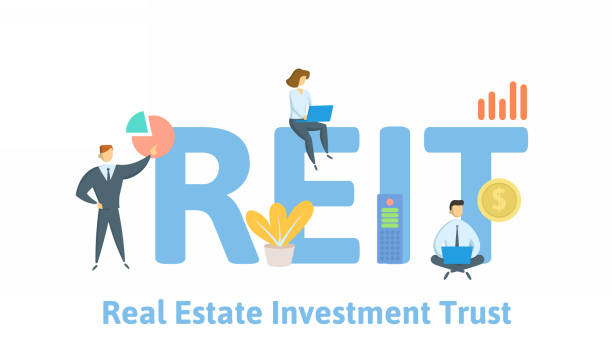Investing in Bonds is an integral part of a diversified investment portfolio. Bonds offer a relatively stable investment option, providing regular income streams and often lower risk compared to stocks.
If you’re considering investing in bonds, understanding the basics is crucial. In this comprehensive guide, we’ll delve into the fundamental aspects of bond investment to equip you with the knowledge needed to make informed decisions.


Table of Contents
Investing in Bonds- What Are Bonds?
Bonds are debt securities issued by governments, municipalities, or corporations to raise capital. When you invest in bonds, you essentially lend money to the issuer in exchange for periodic interest payments and the repayment of the bond’s face value at maturity.
In simple words, When you buy a bond, you’re lending your money to the “issuer” in exchange for regular interest payments and the promise that they’ll pay you back the original amount (the principal) at a specified future date, known as the maturity date.
For instance, imagine you buy a government bond for $1,000 with a 5% interest rate. That means the government will pay you $50 every year (5% of $1,000) until the bond matures, at which point they’ll give you back the $1,000.
1. Types of Bonds
When considering bond investments, understanding the different types available in the market is crucial. Each type caters to specific investment objectives and risk appetites.
a. Government Bonds
Government bonds are renowned for their stability and are considered low-risk investments. These bonds are issued by national governments and are backed by the government’s ability to tax its citizens and, if necessary, print more money to repay bondholders. Examples include U.S. Treasury bonds, notes, and bills.
For instance, during times of economic uncertainty, investors often flock to U.S. Treasury bonds as they are perceived as a safe haven due to the backing of the U.S. government.
b. Corporate Bonds
Corporate bonds are debt securities issued by companies to raise capital. They tend to offer higher yields compared to government bonds but come with varying levels of risk. The risk associated with corporate bonds depends on the financial health of the issuing company and its credit rating.
For example, a company with a robust financial track record and a high credit rating might issue bonds with lower yields but with lower risk compared to bonds from a company with a less stable financial standing.
c. Municipal Bonds
Municipal bonds, also known as “munis,” are issued by local governments to fund public projects. They come in two primary types: general obligation bonds and revenue bonds. General obligation bonds are backed by the full faith and credit of the issuing municipality, while revenue bonds are supported by the revenues generated by a specific project, like toll roads or utilities.
For instance, if a municipality issues a revenue bond to fund a toll road, the bond’s interest and principal payments are typically supported by the toll revenue generated from that road.
2. Bond Ratings
Bond ratings are a critical tool for investors to assess the creditworthiness of bond issuers and the potential risks associated with investing in a particular bond.
Credit rating agencies like Moody’s, Standard & Poor’s (S&P), and Fitch assign ratings based on thorough analysis of an issuer’s financial stability. These ratings range from AAA (the highest quality) to D (default).


For example, a corporate bond with an AAA rating signifies a very low risk of default, while a bond with a B rating indicates higher risk and potentially higher returns.
3. Bond Yields and Prices
Understanding bond yields and prices is essential for evaluating potential returns and comprehending how market dynamics influence bond values.
a. Yield
Bond yield refers to the annual return on investment and is influenced by several factors, including the bond’s coupon rate, its price, and prevailing market conditions. Higher yields often indicate higher returns but may come with higher risks.
For example, if an investor purchases a $1,000 bond with a 5% coupon rate, they can expect to receive $50 annually ($1,000 x 5%) in interest payments.
b. Price
Bond prices fluctuate based on market demand, interest rate changes, and the bond’s maturity. When interest rates rise, existing bonds with lower coupon rates may decrease in value to align with newer bonds offering higher yields.
For instance, if an investor holds a bond with a 3% coupon rate in a rising interest rate environment where new bonds are issued with 5% coupon rates, the value of the existing bond may decrease to attract buyers seeking higher yields.
4. Duration and Risks
Understanding bond duration and associated risks is vital for managing investment portfolios effectively and mitigating potential losses.
a. Duration
Duration measures a bond’s sensitivity to changes in interest rates. Bonds with longer durations are more sensitive to interest rate fluctuations than those with shorter durations. This sensitivity affects how much a bond’s price will change in response to interest rate movements.
For instance, a bond with a duration of 10 years will experience a more significant price change for every 1% change in interest rates compared to a bond with a duration of 3 years.
b. Risks
Bond investments come with inherent risks that investors need to consider. Interest rate risk arises when bond prices fluctuate due to changes in interest rates. Credit risk refers to the issuer’s inability to meet its debt obligations, leading to potential default.
Moreover, inflation risk can erode the purchasing power of fixed-interest payments from bonds. During periods of high inflation, the real value of these payments decreases, impacting investors’ returns.
Conclusion
Investing in bonds offers a diverse range of opportunities, each with its own set of risks and potential rewards. Whether seeking stability, income, or portfolio diversification, bonds can serve as valuable assets. However, it’s crucial to conduct thorough research, consider individual risk tolerance, and potentially consult with financial advisors to align bond investments with specific financial goals.
Remember, the bond market is dynamic and influenced by various economic factors. Staying informed and continuously educating oneself about market trends and bond dynamics is essential for making informed investment decisions.
Feel free to share your thoughts, experiences, or questions on bond investments in the comments below. Your insights could spark valuable discussions and aid others in navigating the world of bond investing more confidently.



